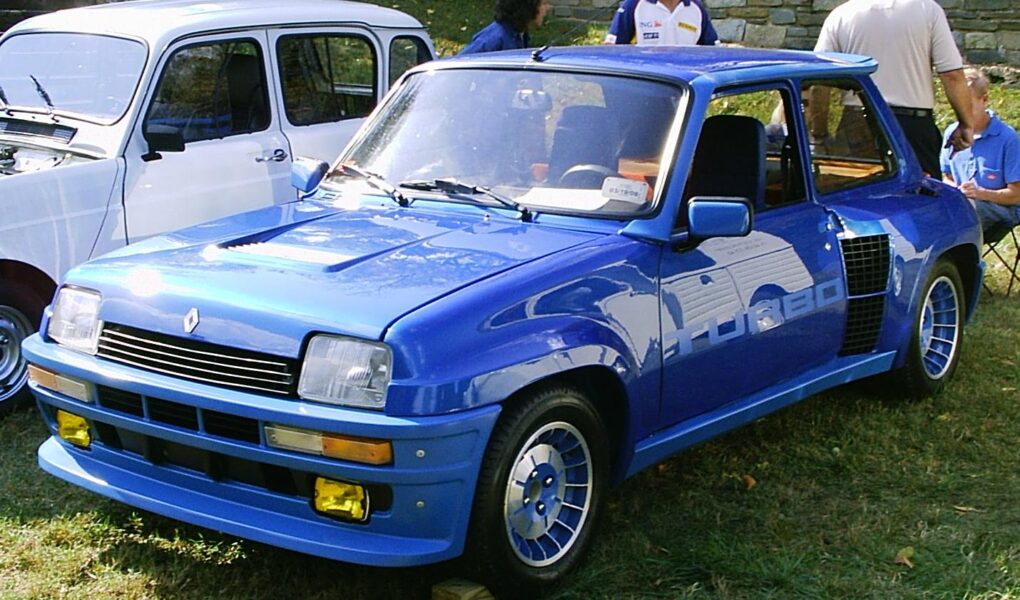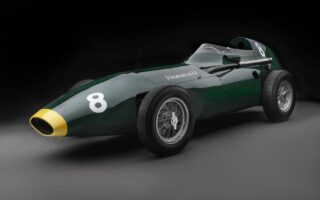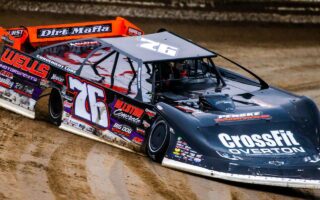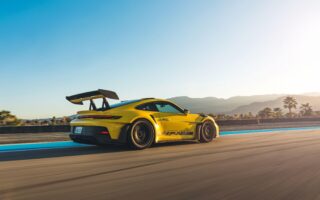In the realm of automotive history, few vehicles have captured the spirit of innovation and performance quite like the Renault 5 Turbo. Launched in 1981, this compact hatchback was more than just a car; it was a symbol of a daring new era in motorsport and consumer vehicle design. With its bold, angular lines and a rear-wheel-drive layout that defied the conventional wisdom of the time, the Renault 5 Turbo stood out as a beacon for enthusiasts and casual drivers alike. Through a combination of technological advancement and spirited engineering, it carved a unique niche—a hot hatch that was as exhilarating on rally stages as it was on the streets. This article delves into the remarkable legacy of the Renault 5 Turbo, exploring the design philosophy, performance capabilities, and cultural impact of a vehicle that continues to resonate in the hearts of automotive aficionados across the globe.
Table of Contents
- Reviving the Spirit of Rally: The Renault 5 Turbo Legacy
- Unpacking the Turbocharged Performance Innovations of 1981
- Designing A Classic: A Closer Look at the Renault 5 Turbo Aesthetics
- Essential Considerations for Restoring and Owning a Renault 5 Turbo Today
- Q&A
- The Way Forward
Reviving the Spirit of Rally: The Renault 5 Turbo Legacy
The Renault 5 Turbo emerged in the early 1980s as a true icon of rallying, showcasing the perfect blend of sportiness and innovation. With its compact design, this hot hatch was not just a car; it was a statement. It captivated enthusiasts with its aggressive styling, featuring flared wheel arches and distinctive air intakes that hinted at the power lurking beneath its hood. The heart of this beast was a 1.4-liter turbocharged engine that delivered an exhilarating driving experience, boasting 160 horsepower. This performance allowed it to accelerate from 0 to 60 mph in just 6.9 seconds—a remarkable feat for its time. It wasn’t just about speed; the Renault 5 Turbo was engineered for precision handling, making it a formidable competitor on the rally stages.
Throughout its production run, the Renault 5 Turbo left a lasting impact on motorsport, evidenced by its success in both national and international rallies. Its lightweight construct and mid-engine layout contributed to its agility and stability, allowing drivers to push boundaries and redefine limitations. While it claimed victory in various competitions, the car also fostered a burgeoning community of enthusiasts devoted to preserving its legacy. Fans celebrate the model by organizing events, showcasing restored vehicles, and sharing stories that keep the spirit of the Rallying era alive. Few cars can boast such a rich heritage, and the Renault 5 Turbo remains a symbol of rally culture, reminding us of a time when passion and engineering came together to create something truly extraordinary.
| Feature | Description |
|---|---|
| Engine | 1.4L Turbocharged Inline-4 |
| Power Output | 160 hp |
| 0-60 mph | 6.9 seconds |
| Weight | 980 kg |
| Production Years | 1980-1985 |
Unpacking the Turbocharged Performance Innovations of 1981
The introduction of the Renault 5 Turbo in 1981 marked a pivotal moment in automotive history, fusing innovative engineering with spirited design. This compact hatchback was engineered to not just be a car but an experience, offering a visceral connection to the driving enthusiast. Equipped with a mid-mounted turbocharged engine, the Renault 5 Turbo boasted a robust power output that was enhanced by its lightweight construction, giving it a remarkable power-to-weight ratio. Achievements in aerodynamic efficiency and suspension tuning further contributed to a driving performance that felt both agile and responsive.
Key features that defined the Turbo’s performance included:
- Turbocharged I4 Engine: A 1.4-liter engine generating 160 horsepower, allowing for impressive acceleration.
- All-Wheel Drive: Enhanced grip and stability, providing drivers with confidence in various conditions.
- Sporty Design: Wide fenders and exclusive body kit contributed to both aesthetics and airflow efficiency.
- Lightweight Construction: Use of lightweight materials that heightened agility without compromising safety.
| Specification | Details |
|---|---|
| Engine Displacement | 1.4L Turbocharged I4 |
| Horsepower | 160 hp |
| 0-60 mph | 6.9 seconds |
| Top Speed | 130 mph |
Designing A Classic: A Closer Look at the Renault 5 Turbo Aesthetics
The Renault 5 Turbo is often celebrated for its distinct aesthetics that harmoniously marry form and function. This iconic hatchback was introduced with an eye-catching design, aimed at evoking a sense of sportiness and dynamism. Featuring angular lines, a compact body, and pronounced wheel arches, the exterior embodies the era’s embrace of bold automotive design. The signature rear-wheel drive layout not only enhanced performance but also contributed to its wide stance, giving the car a commanding presence on the road. Not to mention, the vibrant color palette choices—ranging from eye-popping reds to striking yellows—added a layer of personality that attracted a diverse range of enthusiasts.
Inside, the Renault 5 Turbo continued the theme of sporty elegance with a driver-focused cockpit that prioritized function. The bucket seats, covered in durable materials, provided both comfort and support during spirited driving. A simplistic yet functional dashboard showcased various gauges, emphasizing the car’s performance capabilities without unnecessary distractions. Key design elements included a steering wheel with a compact diameter, enhancing driver control, and strategically placed controls that were easy to navigate, even during high-intensity maneuvers. Altogether, the Renault 5 Turbo’s design offers a masterclass in creating a thrilling experience, both aesthetically and aerodynamically.
Essential Considerations for Restoring and Owning a Renault 5 Turbo Today
Restoring a 1981 Renault 5 Turbo is not just about mechanical work; it’s equally a journey into the history of automotive design and performance. When embarking on such a project, consider the availability of replacement parts. While many components are still accessible through specialized suppliers, others may be harder to find due to the car’s age. Therefore, establishing connections with local automotive clubs and online forums can be invaluable for sourcing hard-to-find items and gaining insights from seasoned enthusiasts. Additionally, assess the overall condition of the vehicle before you begin, focusing on critical areas such as:
- Bodywork: Inspect for rust, particularly in wheel arches and sills.
- Engine: Evaluate the state of the turbocharger and engine mounts.
- Interior: Look for original upholstery materials and gauge functionality.
Owning a Renault 5 Turbo today means embracing a blend of nostalgia and the challenges of maintaining a classic vehicle. Vintage vehicles can incur higher insurance and maintenance costs. It is essential to allocate a budget for the ongoing expenses of restoration, parts replacement, and occasional expert consultations. Another consideration is to respect the authenticity of the model while contemplating any upgrades. Create a balance that preserves its heritage while potentially enhancing performance through modern technology, if desired. For a clearer understanding of the potential costs, consider the following:
| Cost Category | Estimated Cost ($) |
|---|---|
| Restoration Parts | 1,000 - 3,000 |
| Labor Costs | 2,000 – 5,000 |
| Insurance | 500 - 1,500 annually |
| Operational Upgrades | 1,500 - 4,000 |
Q&A
Q&A: A Closer Look at the Renault 5 Turbo (1981)
Q: What is the Renault 5 Turbo, and what makes it stand out in automotive history?
A: The Renault 5 Turbo, launched in 1981, is a defining model in the realm of hot hatchbacks. What sets it apart is its rally heritage and innovative engineering. Unlike typical front-wheel-drive hatches, the Turbo features a rear-mounted engine and a wider body, giving it a unique driving experience and exceptional handling characteristics.
Q: What were the key design features of the Renault 5 Turbo?
A: The Renault 5 Turbo sported a striking design with flared wheel arches, an aggressive front fascia, and a distinctive rear spoiler. Its compact size combined with a bold stance made it visually appealing. Inside, it offered a driver-focused cockpit with supportive bucket seats, reflecting its performance-oriented nature.
Q: Can you elaborate on the engine specifications?
A: Absolutely! The Renault 5 Turbo was equipped with a 1.4-liter turbocharged inline-four engine. This potent little powerplant produced around 160 horsepower, enabling the compact car to achieve impressive acceleration and agility. The combination of lightweight construction and turbocharging allowed the 5 Turbo to deliver a thrilling driving experience.
Q: How did the Renault 5 Turbo perform in motorsports?
A: The Renault 5 Turbo made a significant mark in motorsport, particularly in the Group 4 rally scene. Its advanced technology and design made it a formidable competitor, earning numerous victories and further enhancing Renault’s legacy in rally racing. The car’s success on the rally stages helped to cement its status as an icon in the automotive community.
Q: What was the public’s reception of the Renault 5 Turbo when it was launched?
A: Upon its release, the Renault 5 Turbo garnered a positive reception from both enthusiasts and the general public. Its bold design, coupled with thrilling performance, appealed to a wide audience. The car became a symbol of the 1980s motoring scene, popularizing the concept of the hot hatchback in Europe.
Q: Is the Renault 5 Turbo still appreciated today?
A: Yes, the Renault 5 Turbo continues to be highly regarded among classic car enthusiasts and collectors. Its unique position in automotive history, coupled with its distinctive aesthetics and performance credentials, keeps it in high demand at auctions and car meets. The model is often celebrated in retro car events, maintaining its legendary status.
Q: Are there any notable variants of the Renault 5 Turbo?
A: Indeed, the Renault 5 Turbo had a few notable variants, including the Turbo 2, which was designed to be more accessible to the public while still retaining much of the performance-oriented DNA of the original. The Turbo 2 featured some cost-saving measures, such as simplified interior materials, yet retained the same exhilarating performance that enthusiasts craved.
Q: What drives the fascination with the Renault 5 Turbo among car collectors today?
A: The fascination with the Renault 5 Turbo stems from its blend of racing pedigree, innovative engineering, and iconic design. For collectors, it represents a thrilling era of automotive history where performance and style converged. Its rarity, combined with the nostalgia of the 1980s, ensures that it remains a sought-after gem in the world of classic cars.
Q: What is the legacy of the Renault 5 Turbo in modern automotive history?
A: The Renault 5 Turbo’s legacy is significant in shaping the hot hatchback segment and influencing future performance cars. It paved the way for manufacturers to explore compact designs with sporty attributes. The model’s impact can still be felt in contemporary performance vehicles that balance practicality with exhilarating driving sensations.
The Way Forward
As we turn the final page on the storied legacy of the 1981 Renault 5 Turbo, we are reminded that this hot hatch embodies a unique fusion of innovation and nostalgia. Its distinctive lines and turbocharged spirit not only reshaped the landscape of rally racing but also left an indelible mark on automotive culture. The Renault 5 Turbo stands as a testament to the era of bold engineering and daring design, where performance met everyday practicality in a way few cars have succeeded in achieving since. As we navigate the winding roads of history, the Renault 5 Turbo remains an enduring symbol of the passion that drives both car enthusiasts and casual drivers alike. Whether it graces the asphalt of a racetrack or captures the gaze of onlookers at a classic car show, its legacy continues to thrill and inspire, ensuring that the spirit of the Renault 5 Turbo will never truly fade into the rearview mirror.



